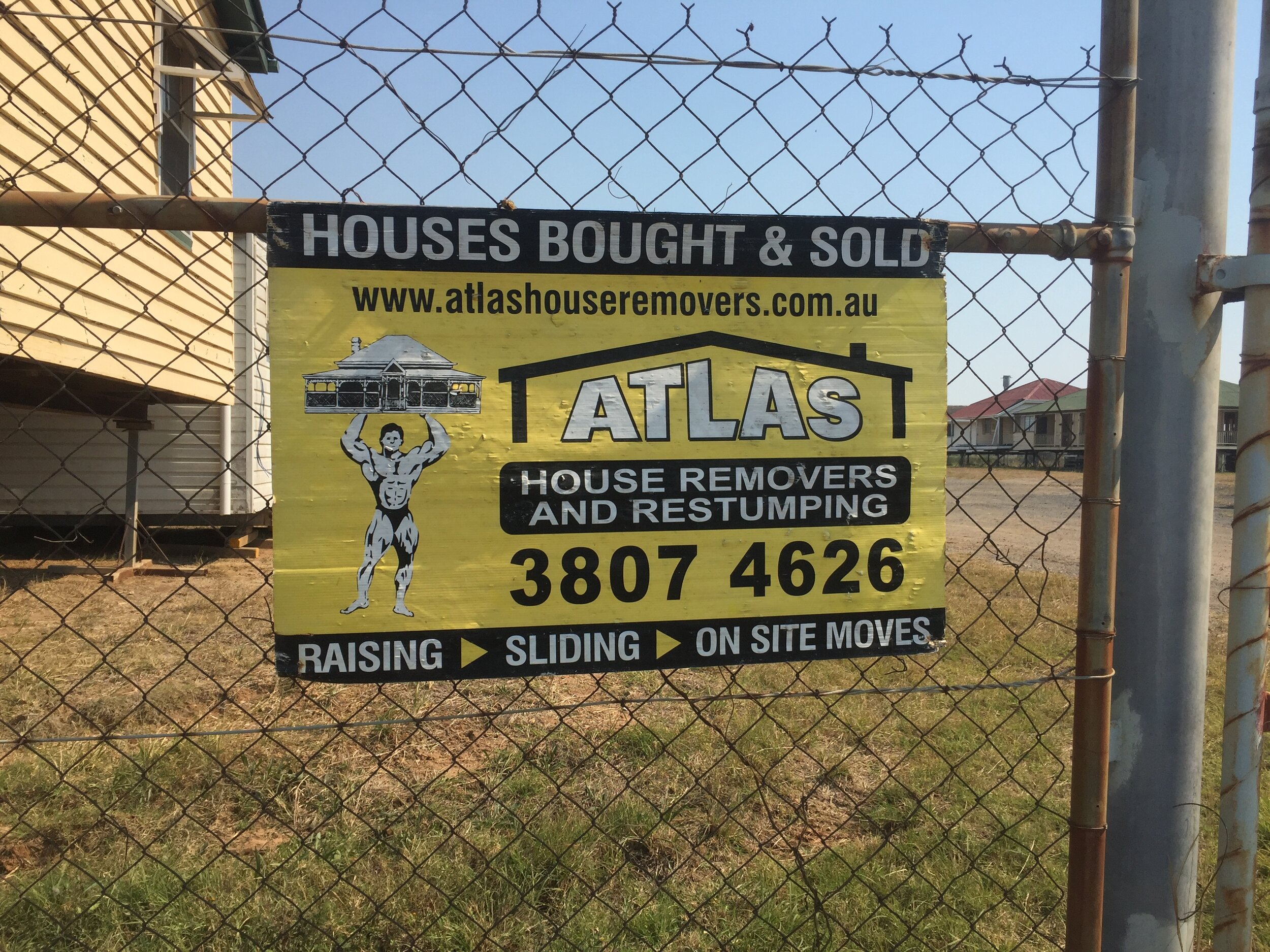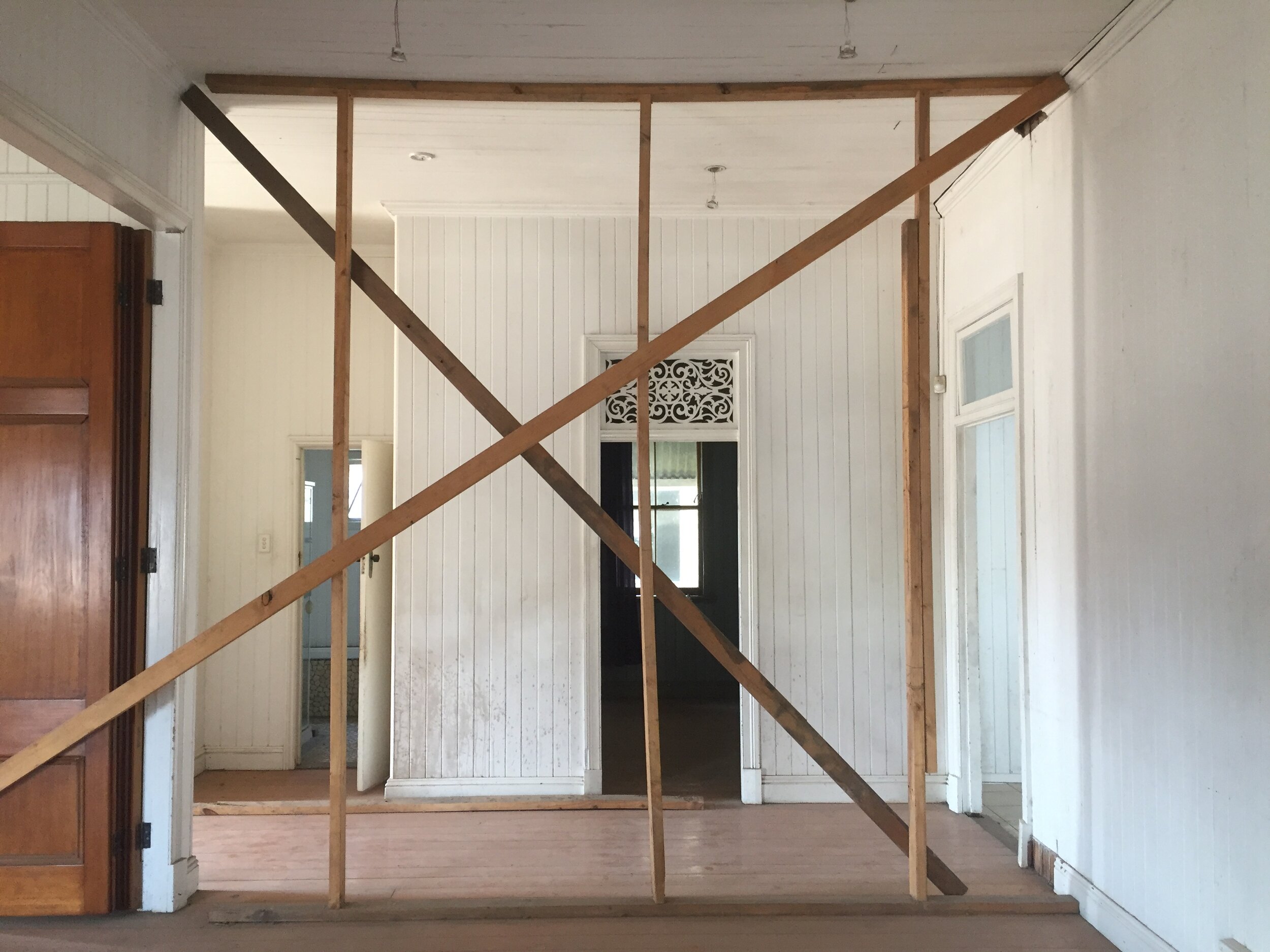Last week I visited the Atlas Homes yard in Pinkenba, an outlying suburb, with Leo - the Temple lead, who has now come on board as a collaborator on the Backbone Festival project at EBBC. It was an odd experience, walking around houses that have literally been transplanted from their homes - the signs of recent inhabitation were many: plates in the sink, magazines on the floor, pot plants still hanging on the deck.
http://www.atlashouseremovers.com.au/
We came to look at four houses in particular which were removed from Lytton Road, in East Brisbane, as part of the road widening there.
https://www.brisbane.qld.gov.au/traffic-and-transport/roads-infrastructure-and-bikeways/current-road-and-intersection-upgrades/east-brisbane-wynnum-road-corridor-upgrade-stage-1
These are the last remaining of twelve that came through the yard, and another fourteen that were demolished are removed at an earlier stage. The story of their removal is somewhat fraught - a bitter community campaign initiated by the residents of the houses failed to persuade the municipal government to reconsider the road upgrade, despite the fact that all of the houses pre-date 1946, and were thus heritage listed.
https://www.facebook.com/groups/1727481584178372/
We were met onsite by Erin, the owner of the yard. Passionate about her work, and a prolific story-teller, Erin outlined her simple philosophy - that it was better to save these characterful old houses by removing them than to see them simply demolished and disposed of. She sits on the board of the Queensland recycling council, names each house after a relative or friend (partly as a means of keeping track of them all!), and cultivates strong personal relationships with all of her clients. While we walked around, she phoned up each of the buyers of the eight Lytton Road houses that have already been moved elsewhere. Each time she was greeted as an old friend - “how’s your mother?”, etc. It was clear that she cares deeply about what she does and about people. Before leaving, she gave us a comprehensive overview of her own family history - Irish one side and Norwegian on the other.
In conversation a few weeks ago, Councillor Sri proposed the idea that the existence of East Brisbane Bowls Club as a community space probably prevented Lytton Road from being even further widened. This wasn’t enough to save the 26 houses that were removed, however, it does draw an important link between these sites on either side of Mowbray Park. On the one hand, the loss of a community to “progress”, on the other, a community space becoming a symbol of resilience in the face of change. This has now become a key driver of the design enquiry for the EBBC set design - the collection of stories old and new, past and future, relating to this place - these houses, Backbone, and the wider East Brisbane community. The idea has immediately piqued the interest of several collaborators, who in turn have begun to conceive their own responses to this compelling story. A whole network of creatively motivated doers has been mobilised around the construction of a new mythology of place.
Only today, Leo revisited the site with Joseph Burgess, self-declared ‘unregistered master builder’ - a jack of all trades, particularly the AV tech ones. Joseph brought his photogrammetry kit and made 3D scans of the houses - their surface textures, spaces, and materials.
http://master-builder.squarespace.com/
Meanwhile I was in the city meeting with Magnus Eriksson, a management consultant who does heritage assessments as a hobby on the side. He was engaged by the soon-to-be-displaced residents to produce a heritage report for the houses being removed. It has proved to be a valuable resource in identifying relevant historical documents for the area and understanding the specific architectural styles and phases of development represented in the houses, some of which date to the 1890s.
https://www.househistories.org/
Eriksson offered some insights into the processes by which heritage assessment operates in Brisbane and Queensland more generally, drawing comparisons with his home place of Sweden. He was reserved about the politics of the Lytton Road project, though he was unashamed in his critique of both developers and architects in their attitudes to built heritage. We concluded by looking at high quality renderings he produced recently from a historical recreation of the Cloudland ballroom in Fortitude Valley, a fondly remember dance hall and iconic Brisbane venue. He has created a computer model of the space as it evolved over its lifetime, based on photographs and oral and written accounts. This is going to be used later in the year as part of a musical in which artists will recreate historic performances within full-scale projections of the recreated ballroom. This resonates strongly with the emerging proposals for EBBC and I am hopeful that an admittedly busy Eriksson will become more engaged with the process.














